Abstract
Two experiments demonstrated the pigeon's sensitivity to ultraviolet light. In Experiment I, pigeons' responses were reinforced on a multiple schedule with a variable-interval reinforcement schedule in one component and extinction in the other component. Response rates were quite different in the two components where the 520-nm stimuli signalling each component differed only in that one of them contained a 366-nm ultraviolet component. In Experiment II, pigeons were trained to peck one side key when two halves of a split field were of different wavelength and to peck another side key when they were of the same wavelength. Initially, field halves contained both “visible” and ultraviolet components of energy. Discrimination performance improved when the ultraviolet component was removed from one field half. It was argued that the critical change in the stimulus was a color change, rather than a brightness one, or a fluorescence of structures in the pigeon's eye.
Full text
PDF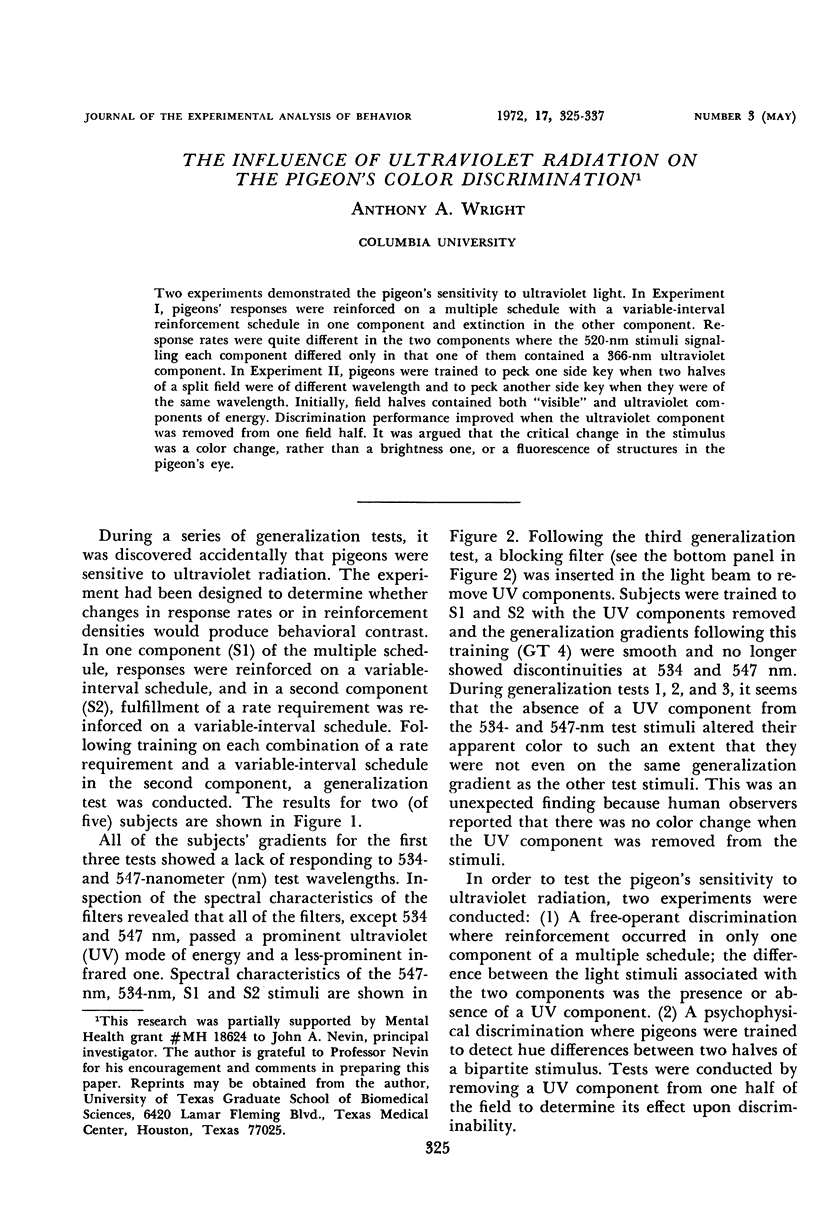
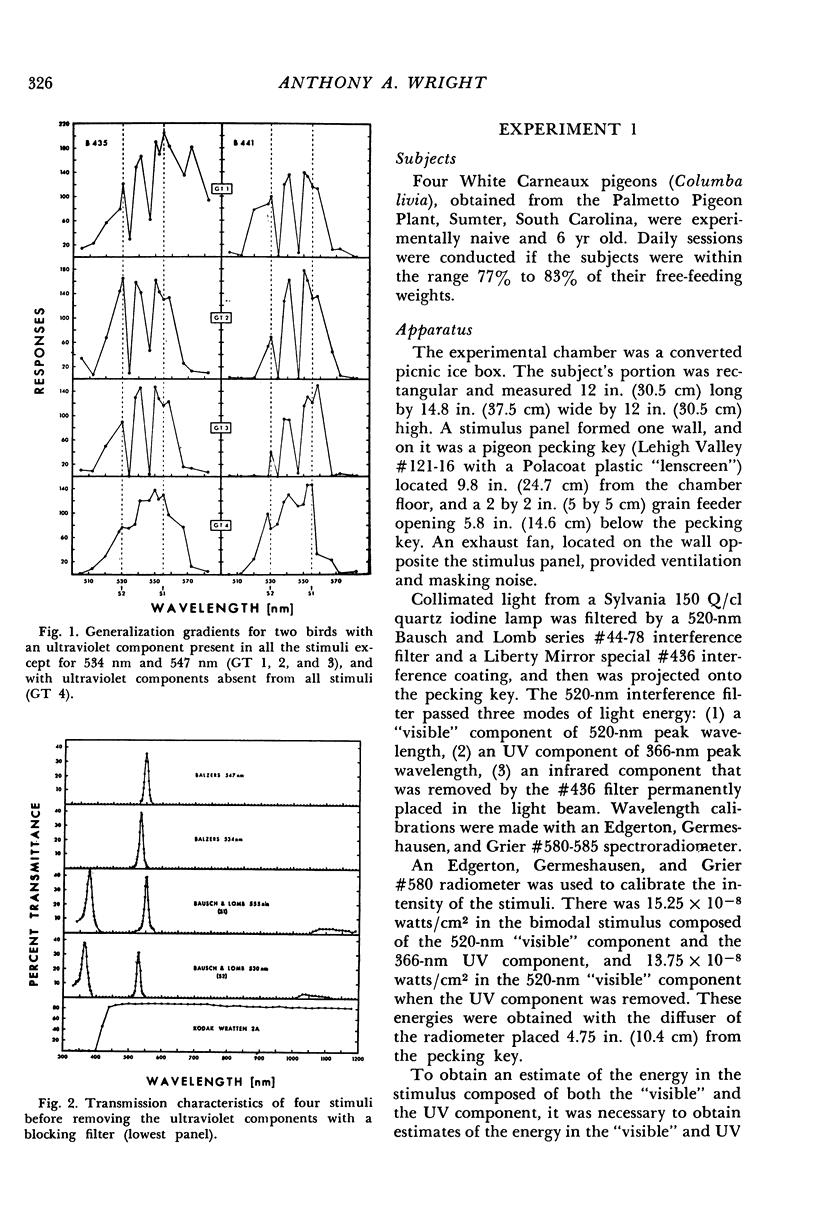
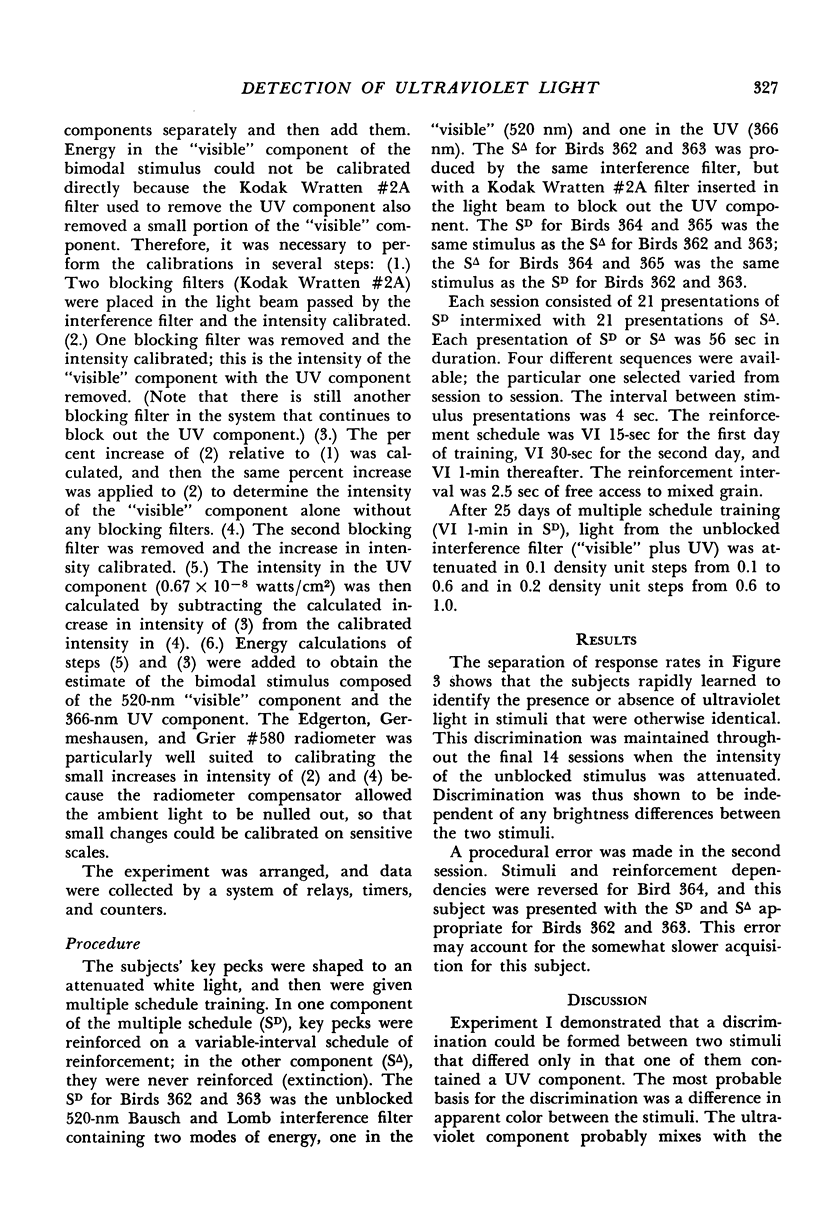
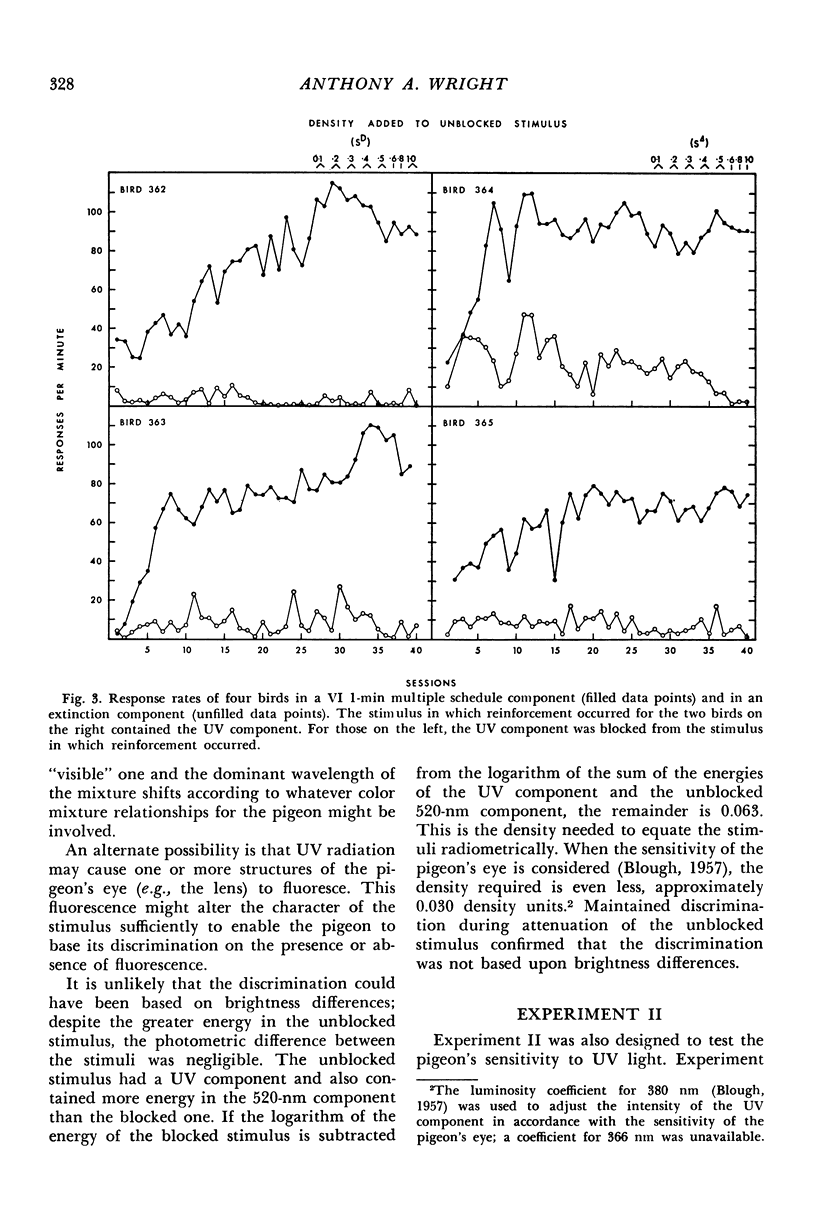
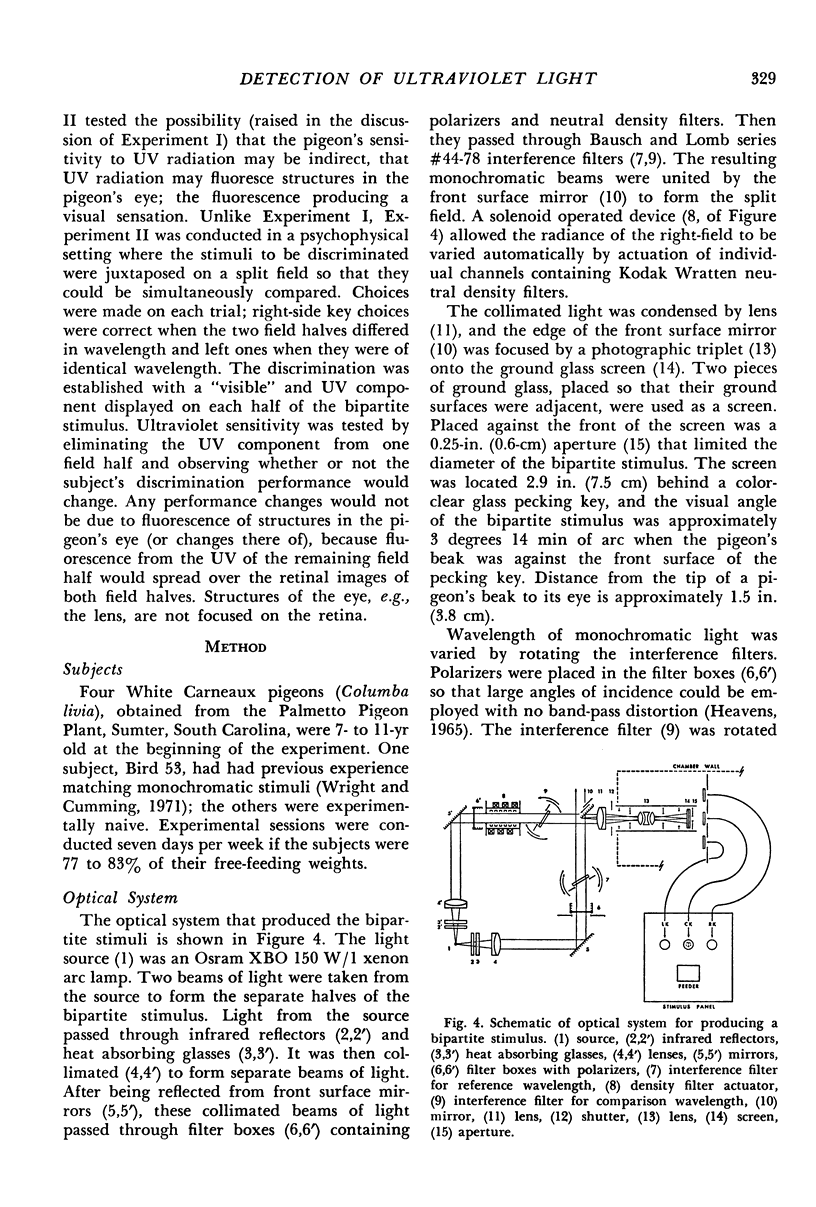
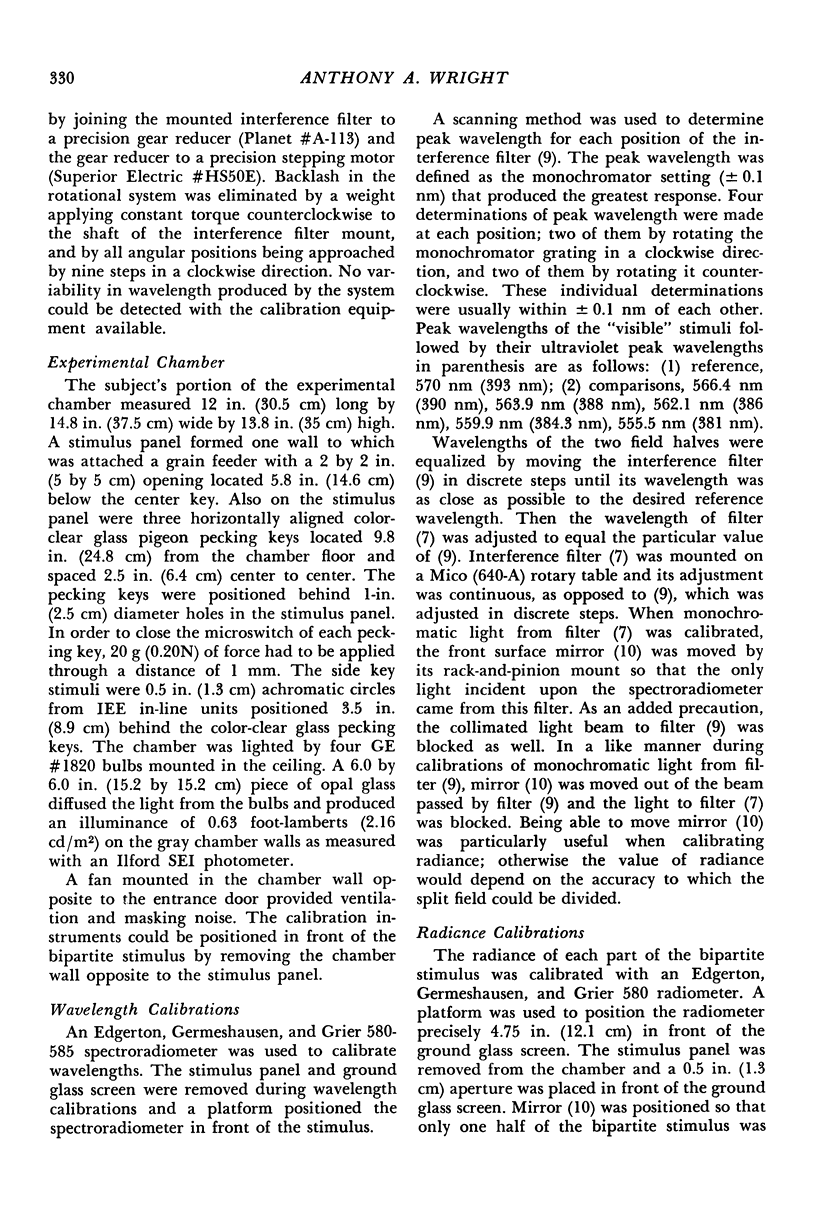
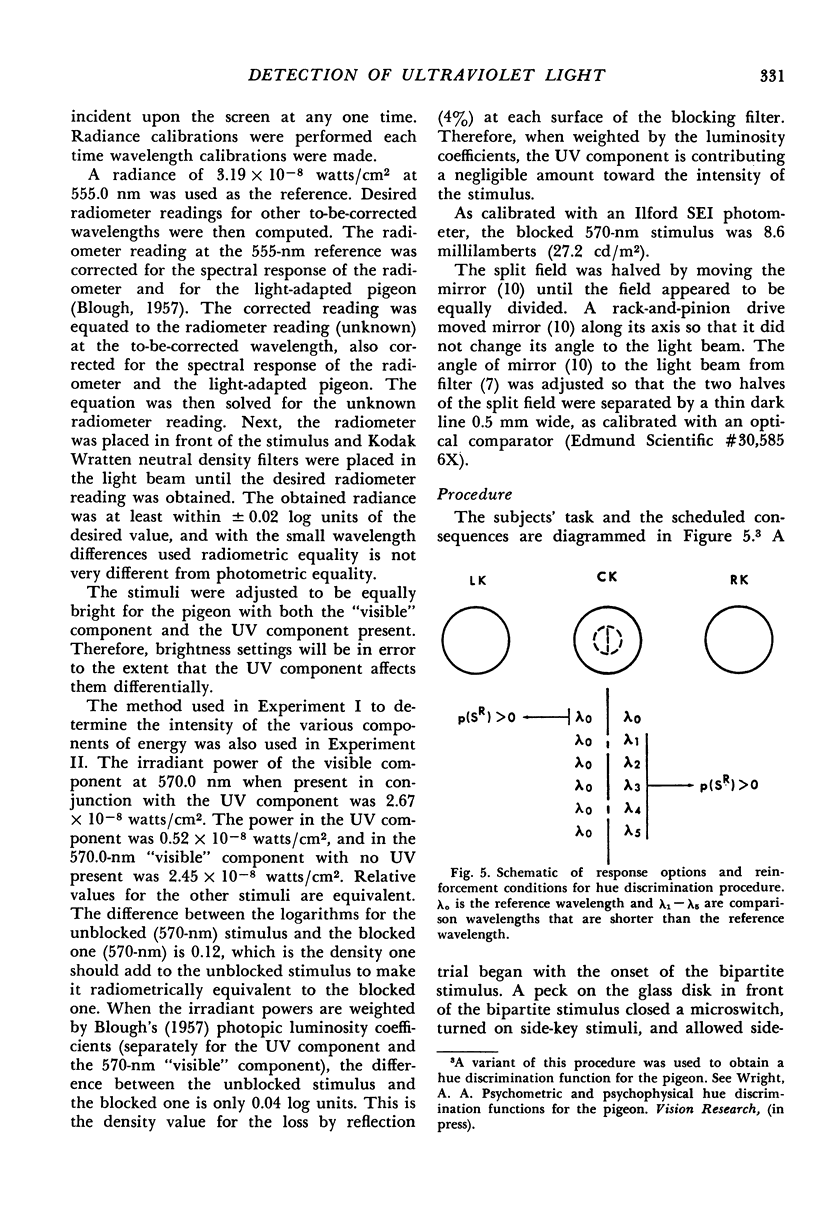
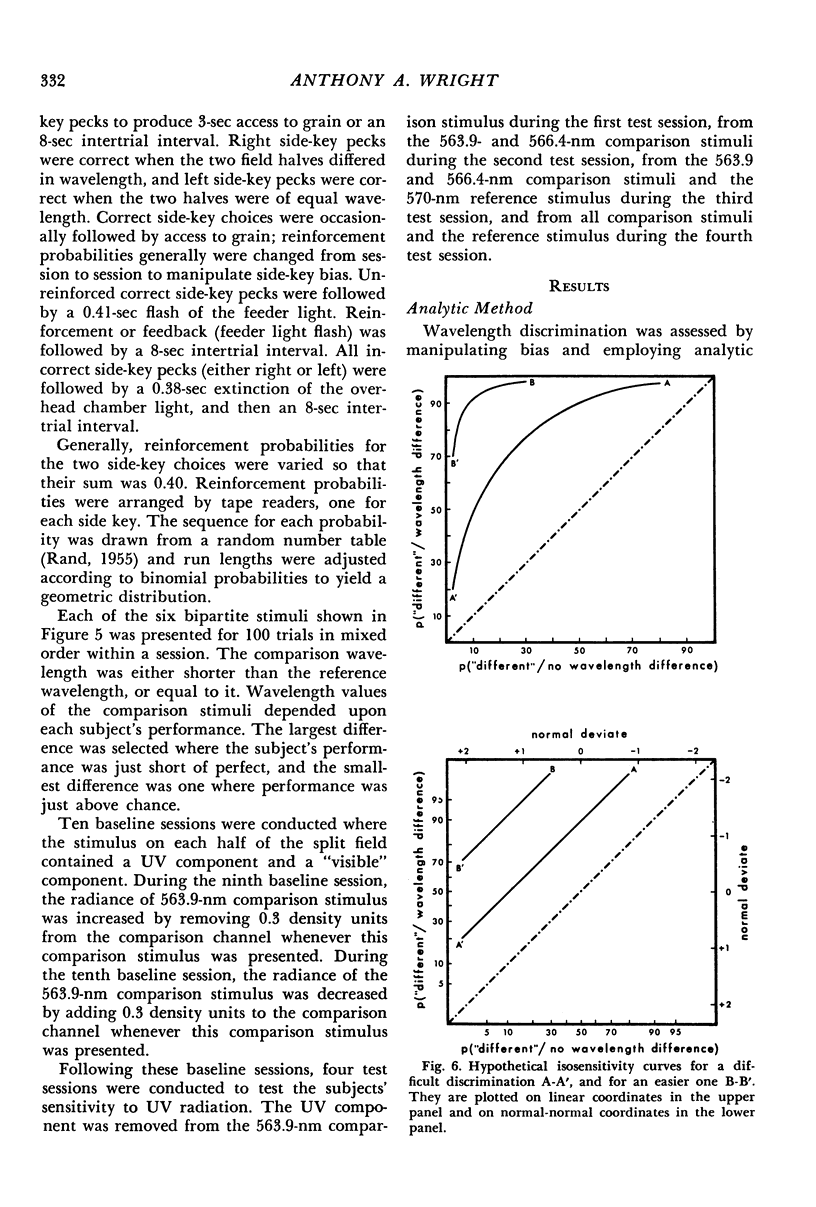
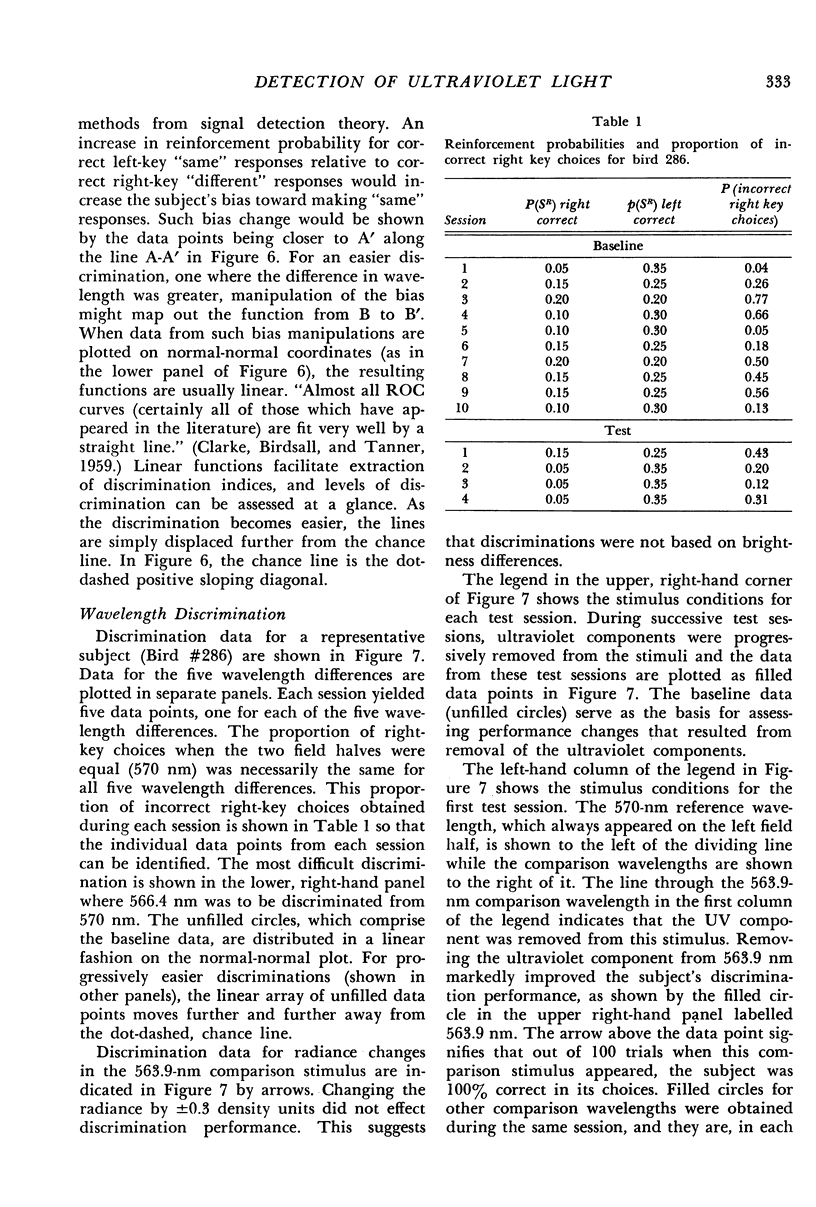
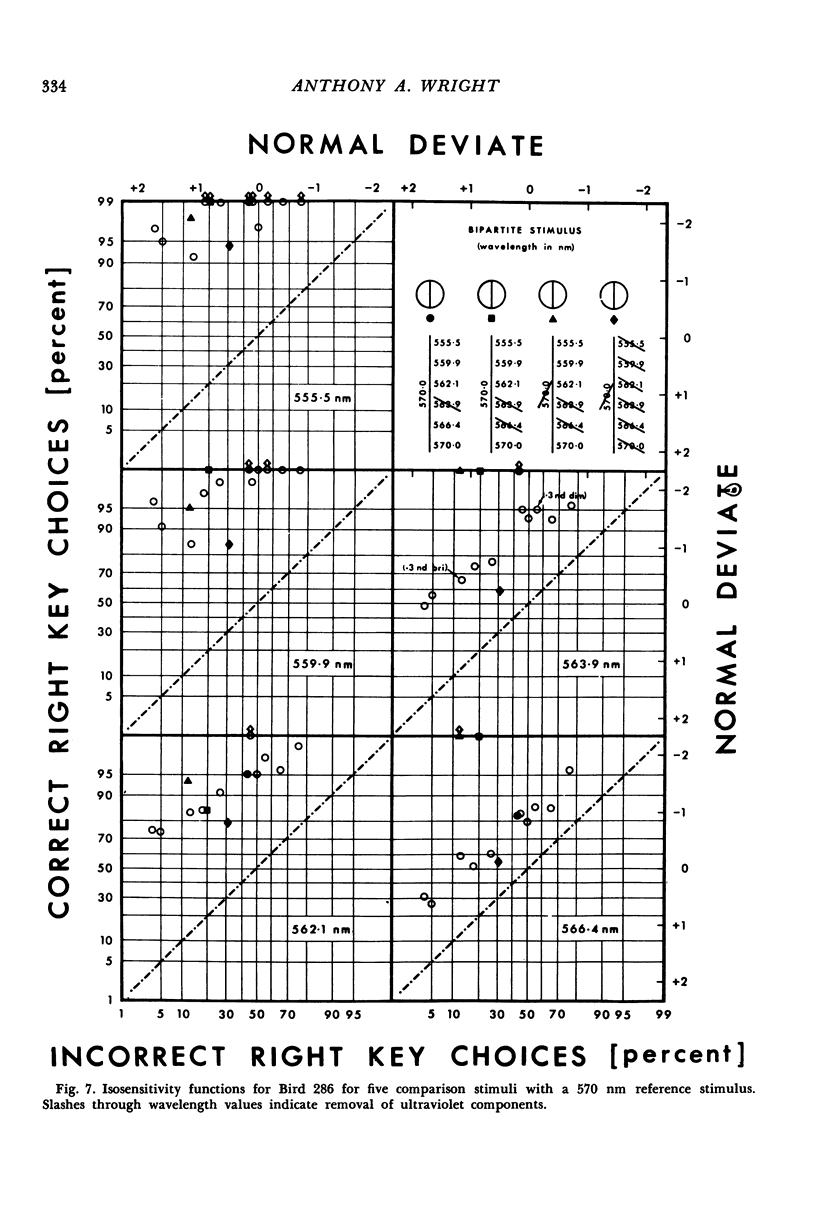
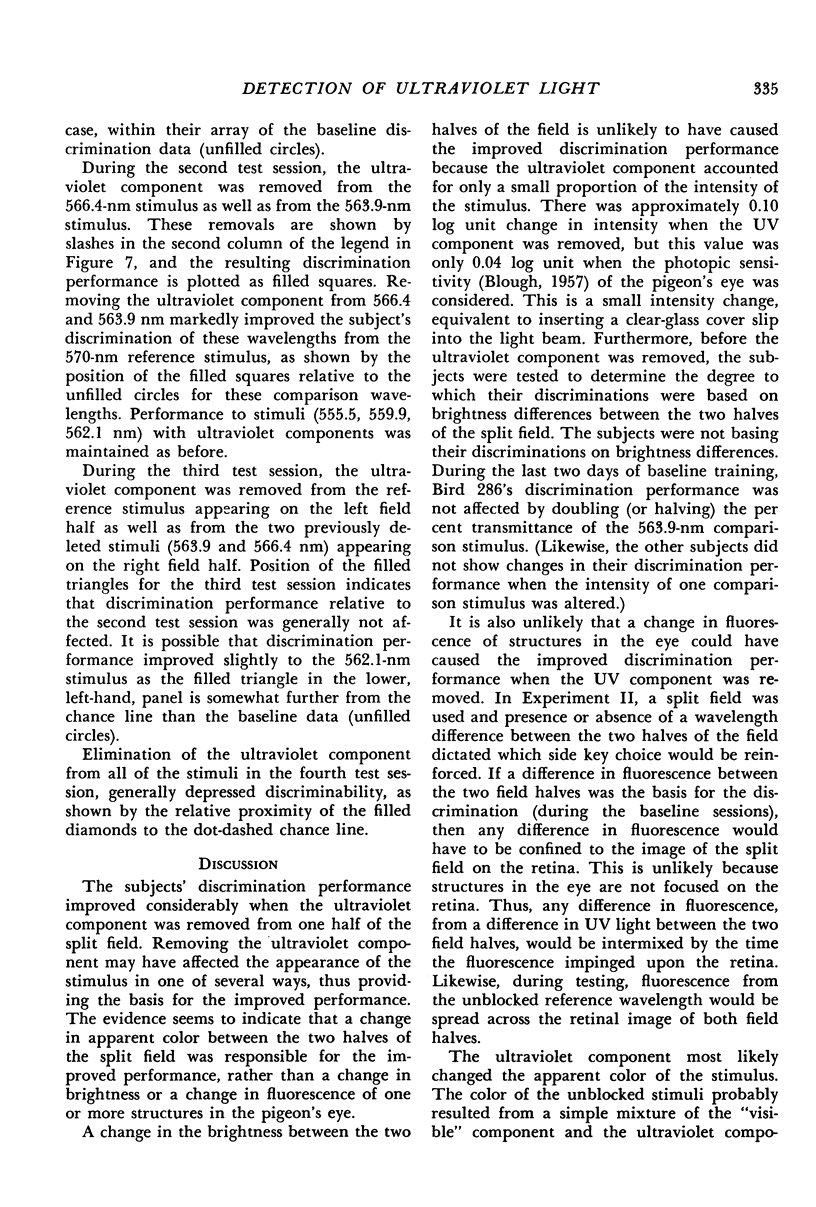
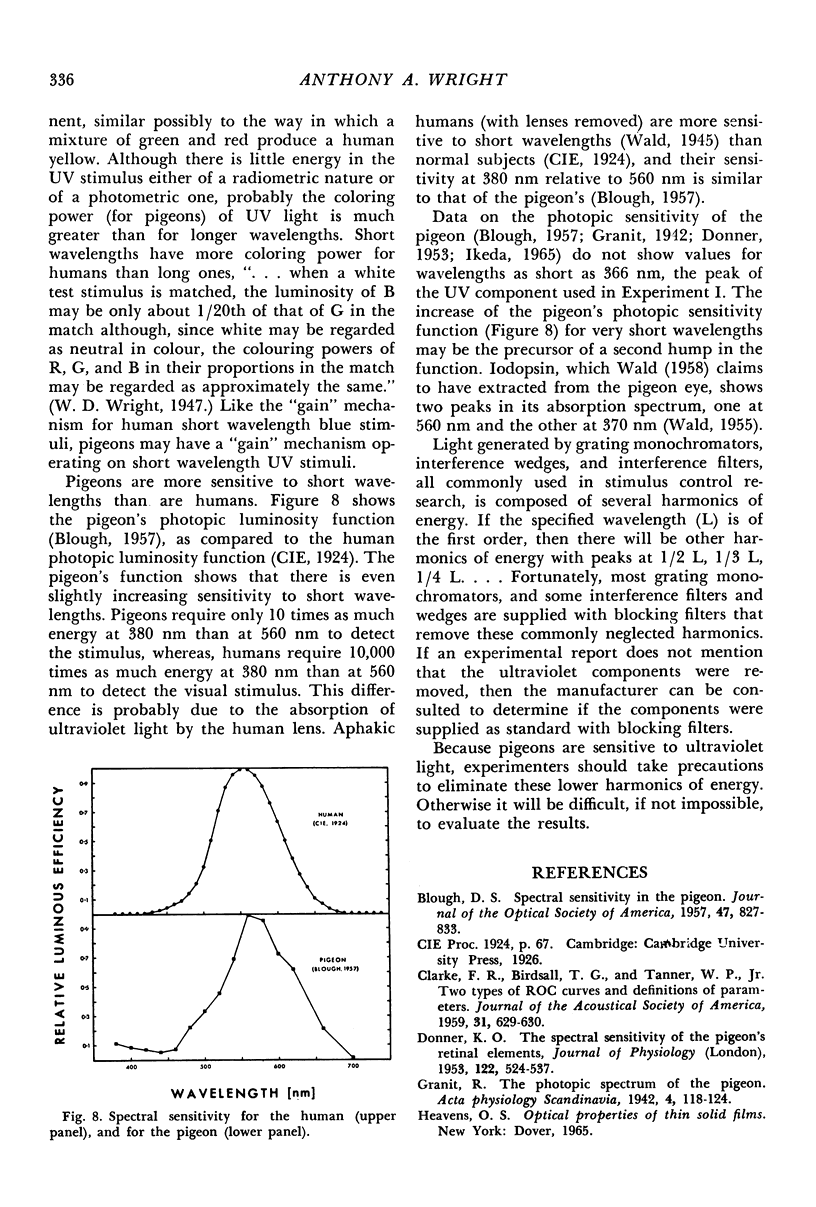
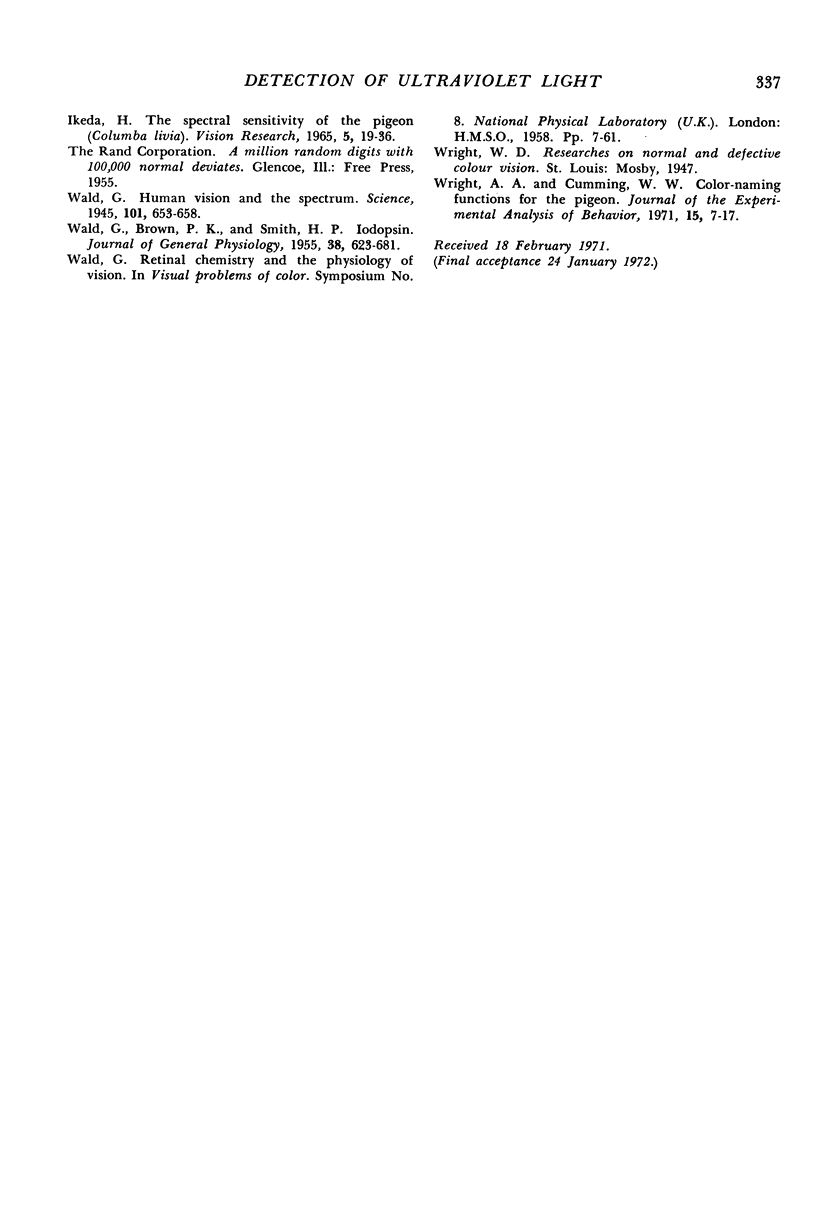
Selected References
These references are in PubMed. This may not be the complete list of references from this article.
- BLOUGH D. S. Spectral sensitivity in the pigeon. J Opt Soc Am. 1957 Sep;47(9):827–833. doi: 10.1364/josa.47.000827. [DOI] [PubMed] [Google Scholar]
- DONNER K. O. The spectral sensitivity of the pigeon's retinal elements. J Physiol. 1953 Dec 29;122(3):524–537. doi: 10.1113/jphysiol.1953.sp005018. [DOI] [PMC free article] [PubMed] [Google Scholar]
- Ikeda H. The spectral sensitivity of the pigeon (Columba livia). Vision Res. 1965 Jan;5(1):19–36. doi: 10.1016/0042-6989(65)90072-6. [DOI] [PubMed] [Google Scholar]
- WALD G., BROWN P. K., SMITH P. H. Iodopsin. J Gen Physiol. 1955 May 20;38(5):623–681. doi: 10.1085/jgp.38.5.623. [DOI] [PMC free article] [PubMed] [Google Scholar]
- Wald G. HUMAN VISION AND THE SPECTRUM. Science. 1945 Jun 29;101(2635):653–658. doi: 10.1126/science.101.2635.653. [DOI] [PubMed] [Google Scholar]
- Wright A. A., Cumming W. W. Color-naming functions for the pigeon. J Exp Anal Behav. 1971 Jan;15(1):7–17. doi: 10.1901/jeab.1971.15-7. [DOI] [PMC free article] [PubMed] [Google Scholar]


